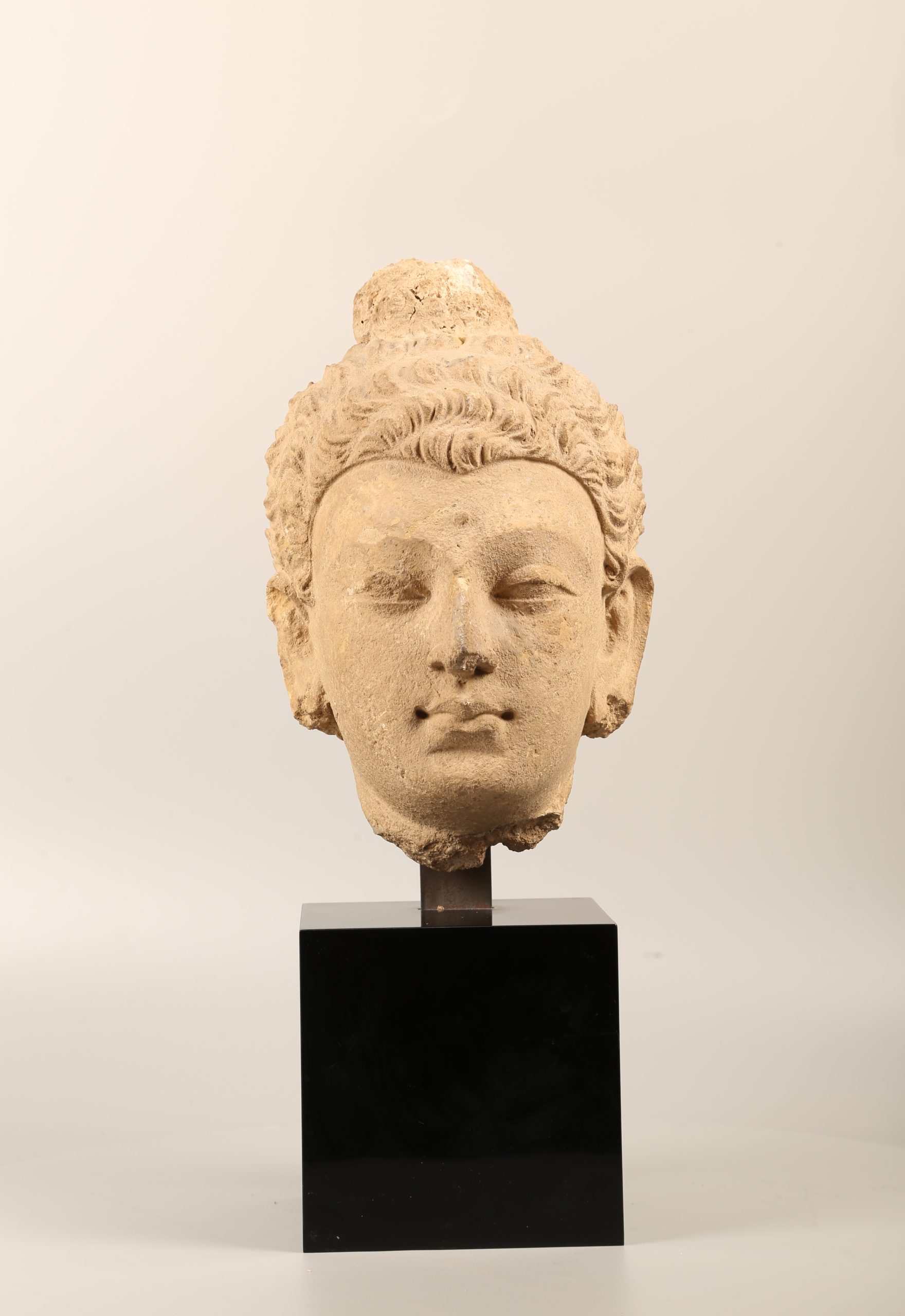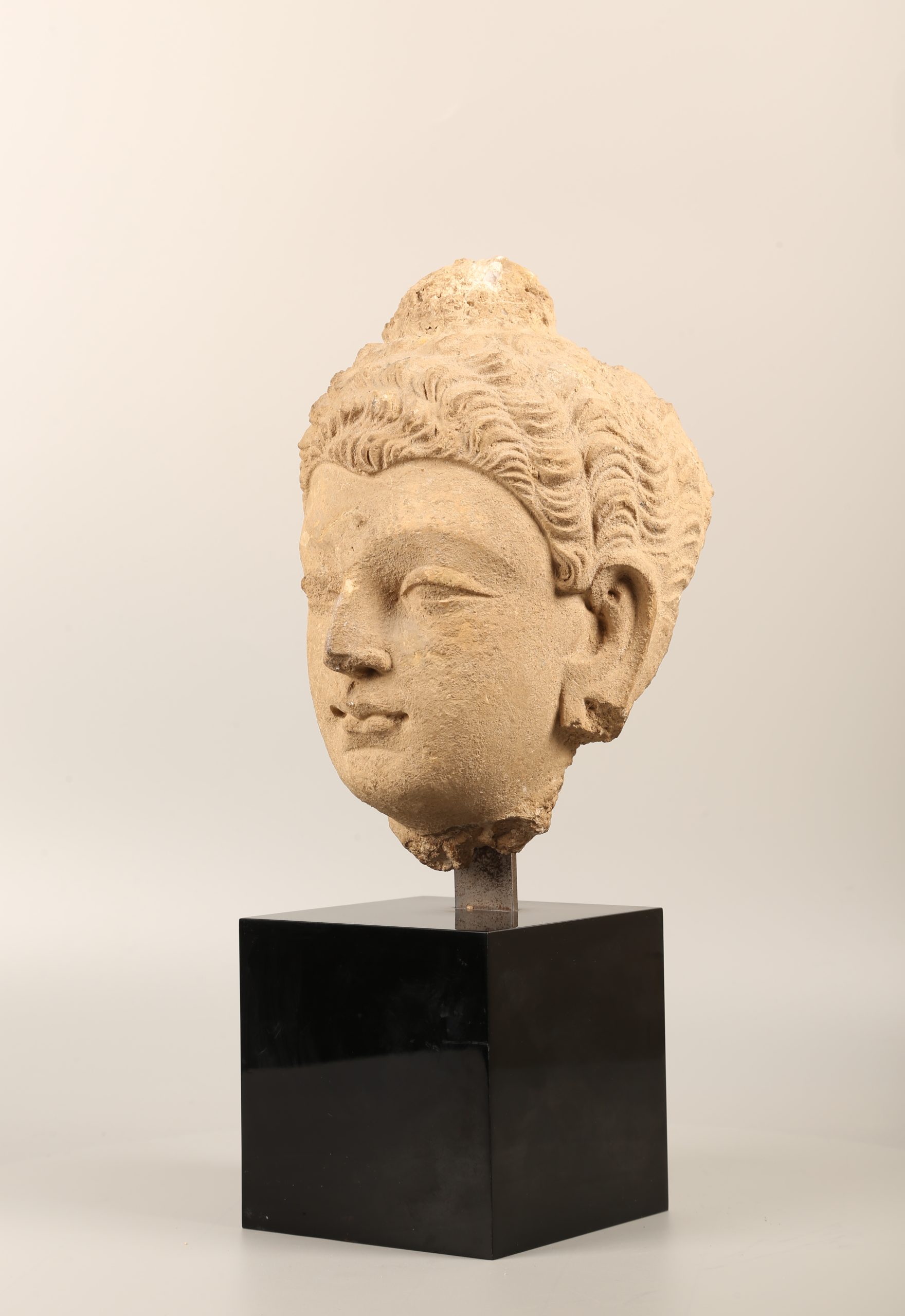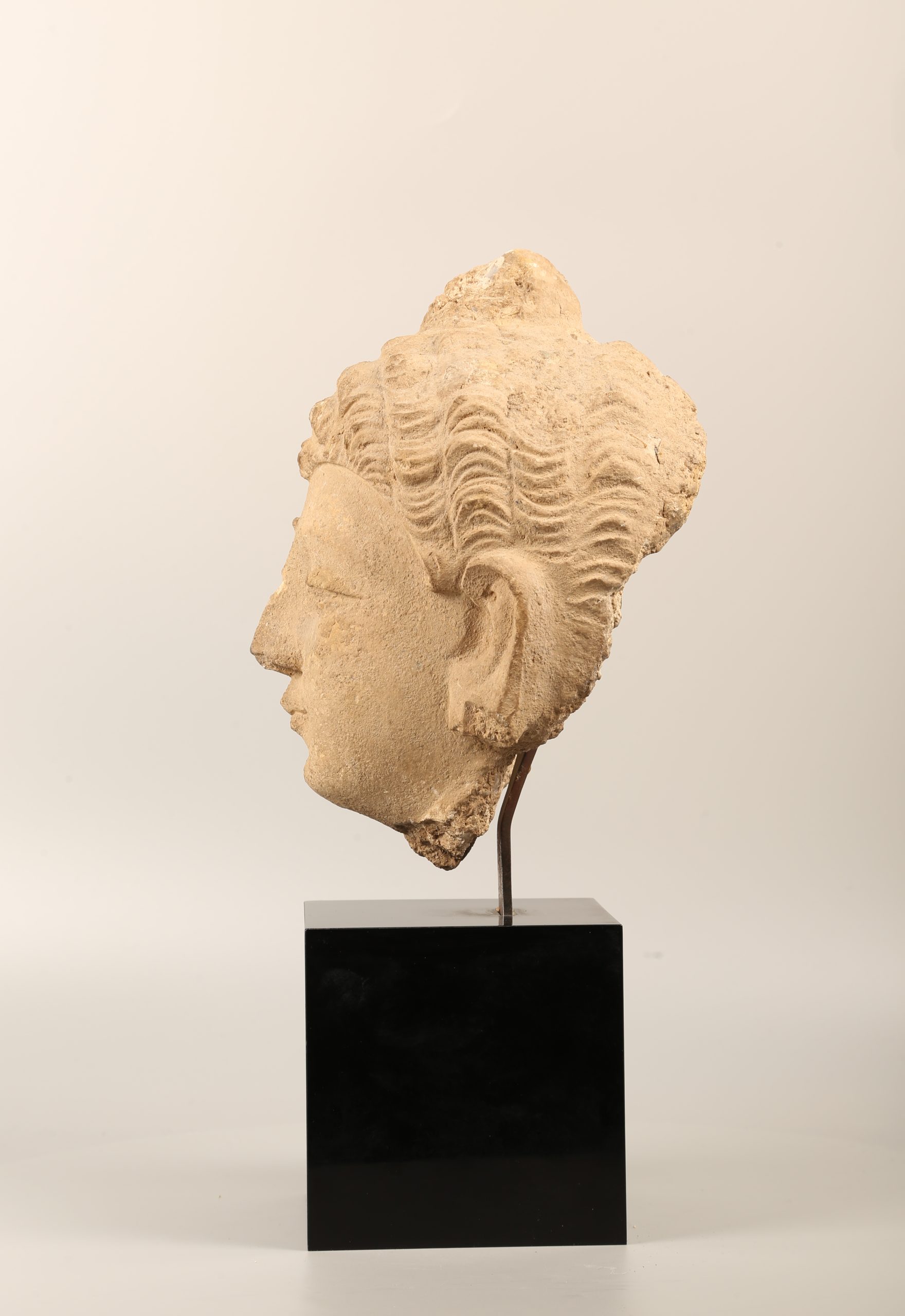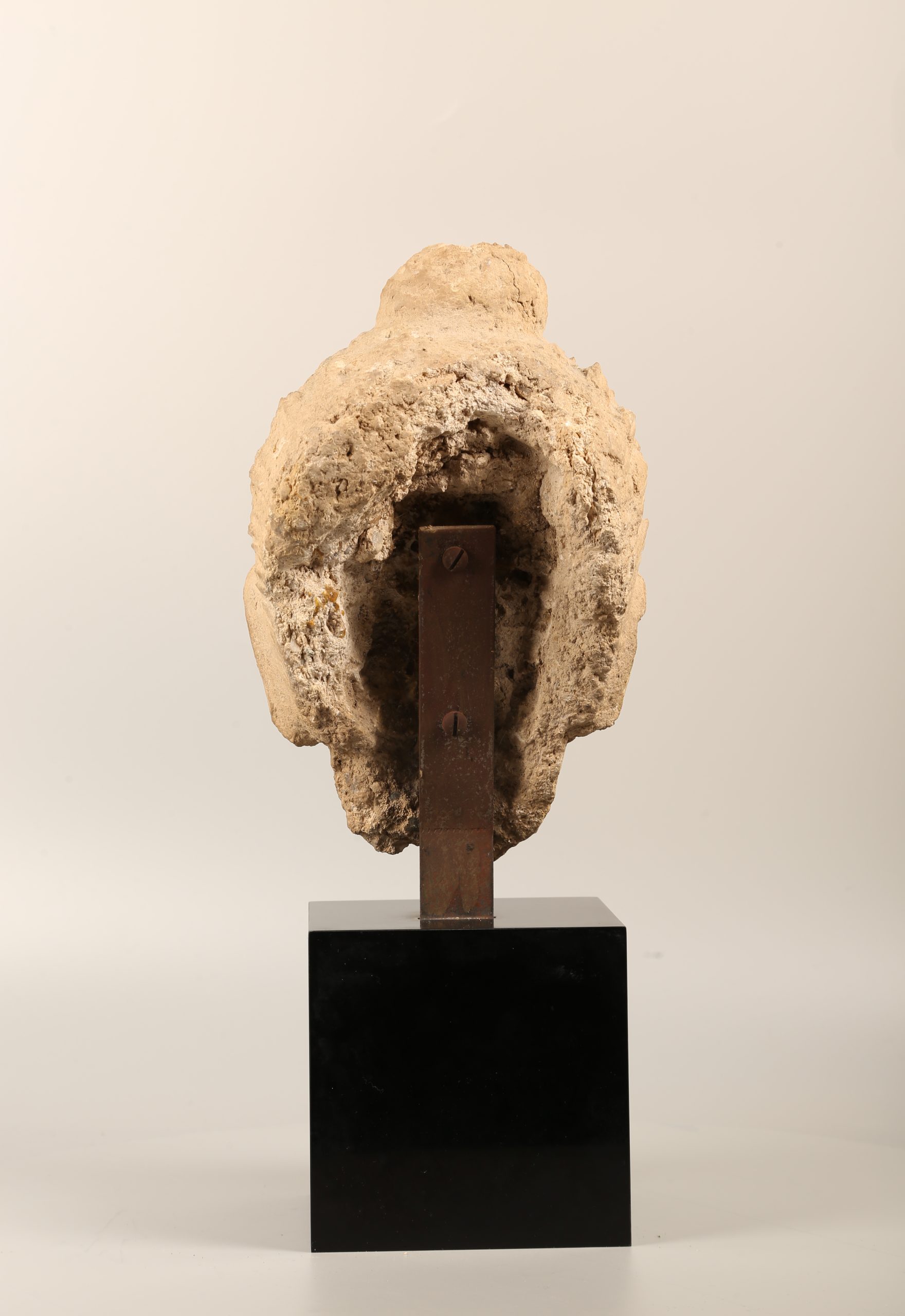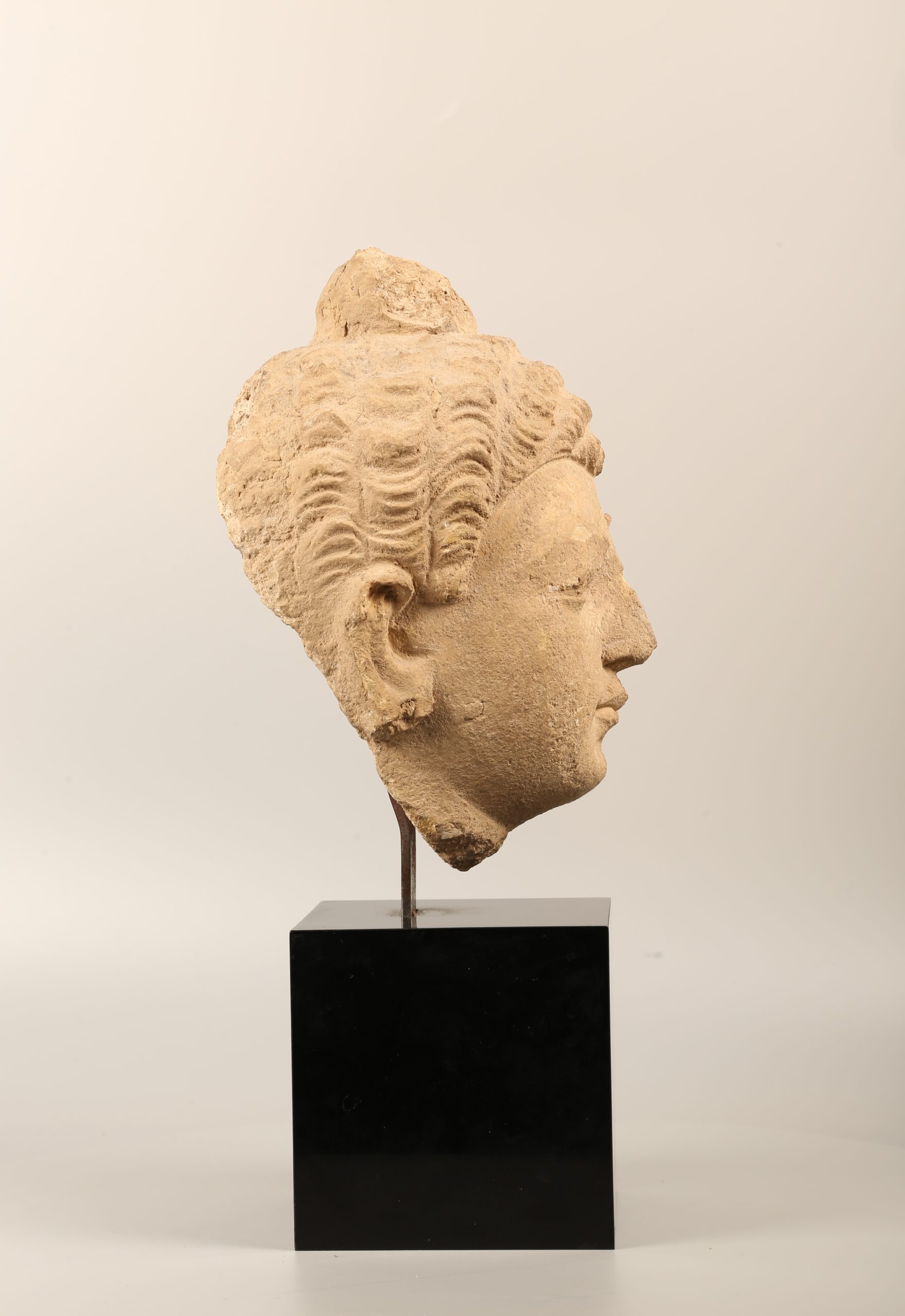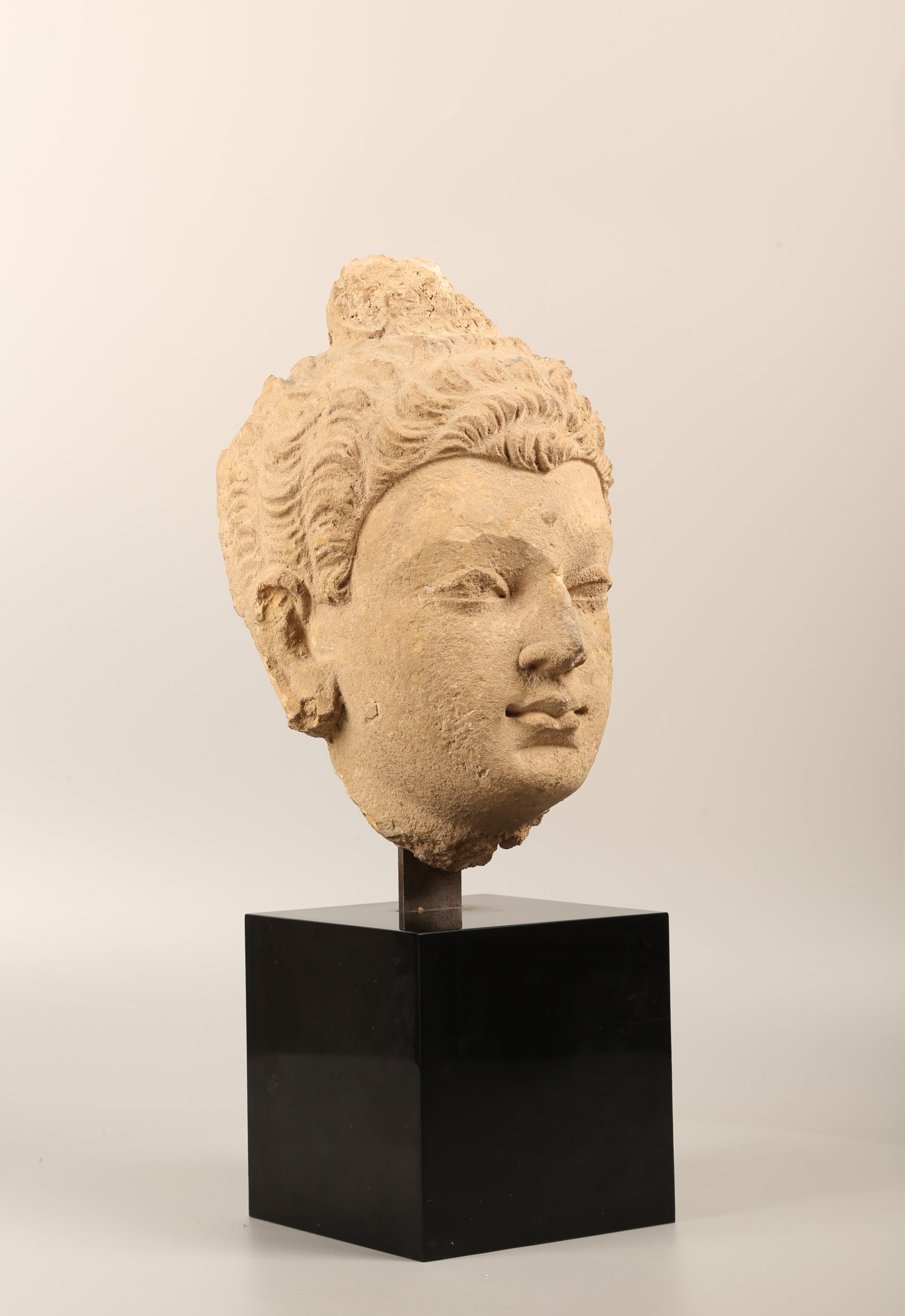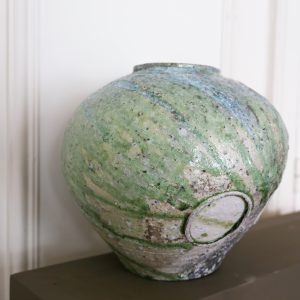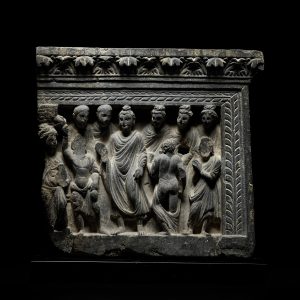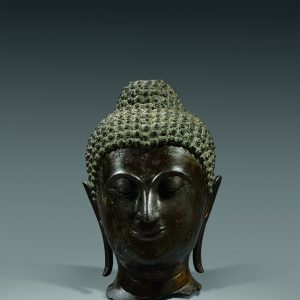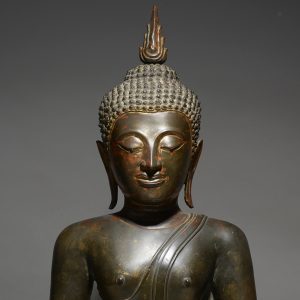Buddha Head in stucco
Stucco
Ancient Gāndhāra region, Haḍḍa
4th-5th century
H: 25 cm or 9.8 in
360° View
Description
The Haḍḍa style, a peculiar aesthetic
This stucco Buddha head comes from the site of Haḍḍa, a collection of Buddhist monasteries that revealed numerous statues, often made in stucco. The site underwent great development, and bears witness to the posterity of the Greco-Buddhist style at a relatively late period.
At Haḍḍa, the Greek influence can be felt particularly in the treatment of bodies, faces and drapery, but also in the iconographic repetitions. For example, the iconography of Heracles, typically Greek, is transposed to certain Buddhist statues, thus testifying to the syncretism of the site.
Assimilated to the art of the Gāndhāra, the art of Haḍḍa is nonetheless distinguished by a very marked Hellenistic influence, creating an aesthetic in its own right, which spread to the farthest reaches of Asia thanks to the Silk Roads.
A very humanistic image of the Buddha
The Buddha is recognisable by his lākṣaṇa or signs of the Great Man. These include his cranial protuberance, the uṣṇīṣa, as well as his tuft of hair in the middle of his eyebrows, called the ūrṇā. These iconographic codes become fixed in the early centuries of our era, at the same time as the first occurrences of anthropomorphic representations of the Buddha appear, thus breaking with a long aniconic tradition.
This paradigm shift originated in the development of a new religious trend, Mahāyāna Buddhism, also known as Great Vehicle Buddhism. The latter now reaches a larger number of followers, and is no longer reserved for an austere monastic elite. Like Mahāyāna Buddhism, religious art is based on a sensitive approach to representations, playing on the connivance with the faithful. Buddha images such as these become true embodiments of compassion, and the gentle art thus turns away from the elite.
The stucco production of the Gāndhāra, of which this head is a part, covers the fervent religious reality of the early centuries of our era in this region. The coroplasts inspire vitality in their works through a very sensitive treatment of flesh and modelling, once emphasised by polychromy, which has disappeared on this piece. The aim is to strike the soul of the spectators, to impress them, in a permanent search for the best way to touch the faithful, while humanising the image of the Buddha.
The syncretism of images
This Buddha with a regular face, a fine, straight nose, and a delicately hemmed mouth whose corners reveal a gentle, compassionate smile, is very realistically made. His thick hair is treated in soft curls, in the manner of portraits of Alexander the Great. Her elongated eyes, with delicately incised lids, reveal a gentle, serene gaze. All these elements are part of Hellenistic art, and testify to the settlement of Greeks in the region.
Coming from Central Asia, the Kuṣāṇa rulers (1st-3rd centuries) were the main patrons of the arts in this geographical area, and it was under their impetus that the art of the Gāndhāra underwent a formidable development. It was a real empire, which included territories from Uzbekistan to North India. This powerful kingdom was at the crossroads of many influences, notably from its Greek neighbours – successors of Alexander – in Central Asia, and then from the Roman Empire, which conquered these territories.
This syncretic style, so original in Buddhist art, enjoyed great posterity in the Gāndhāra, thus ensuring its popularity.
Provenance : French private collection.

